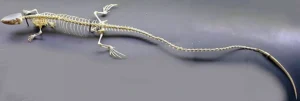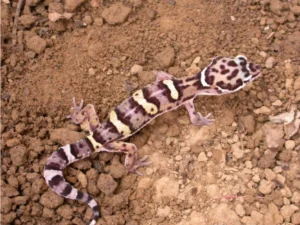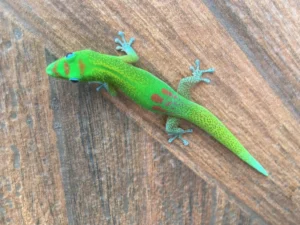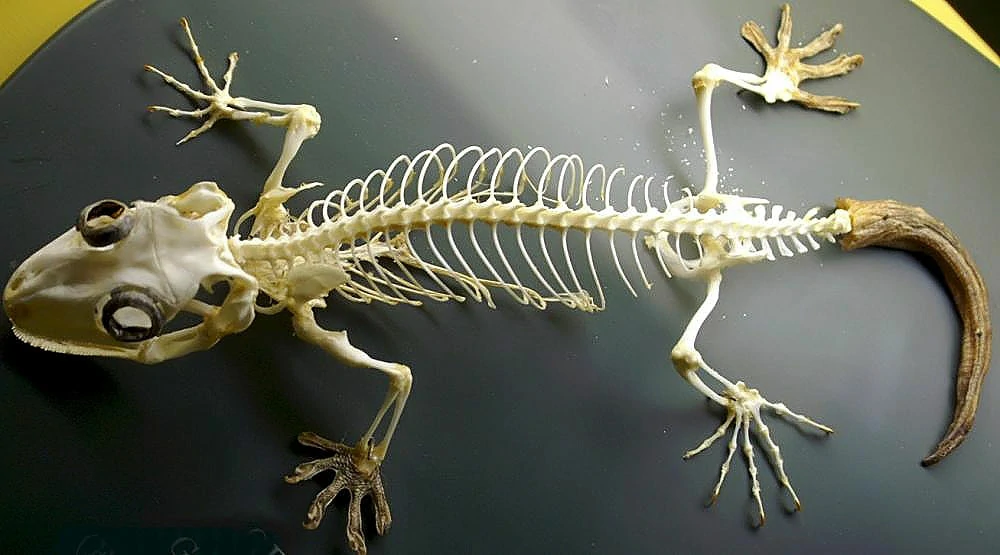If you’ve ever seen a lizard dash across your yard, you might notice its tail doing some weird stuff. Sometimes it wiggles and coils as it moves. Other times, it even looks like it comes off entirely. That makes you wonder: is there actually a skeleton back there? Do lizards have bones in their tails?
Yes, lizards have bones in their tails. A lizard’s tail is made up of lots of small bones called vertebrae. These bones are connected with muscles, tendons, and ligaments, which let the tail bend, twist, and in some lizards, even come off and grow back. The bones give the tail strength and shape, and they actually help the lizard survive and stay balanced.
Even though the bones in a lizard’s tail are real, the way lizards use their tails is really interesting. Some drop their tails to get away from predators.
Others use their tails to store fat, help balance themselves, or even to hit something if they have to.
The bones aren’t just there for show, they’re part of how lizards live and stay safe.
How Lizard Tails Are Built With Bones and Muscles
A lizard’s tail is basically an extension of its spine. It starts where the backbone ends and continues with a series of small bones called caudal vertebrae.
They’re stacked like tiny building blocks, held together with muscles and joints, so the tail can bend, twist, or even whip if needed.
How many bones a tail has depends on the lizard. Small geckos might have 30 or 40 bones, while big lizards like iguanas or monitors can have more than 60.

The bones are small but strong enough to move the tail and take a few bumps.
The muscles around the bones let lizards control their tail really precisely. They can wrap it around a branch, flick it at a predator, or swing it to balance while running or climbing.
In a way, it’s almost like a second set of arms, but all built around these tiny bones.
Why Do Some Lizards Drop Their Tails?
One of the coolest tricks lizards have is called autotomy, which just means they can drop their tail if they’re in danger.
If a predator grabs the tail, some lizards can break it off at special spots in the bones. These spots aren’t weak, they’re made to snap when needed.
After the tail drops, the lizard keeps moving while the tail wiggles behind it, distracting the predator.
The bones usually stay in a line, but the muscles and skin keep twitching, making it look alive.
Later, the tail can grow back, but the new tail isn’t exactly the same. It might be a softer, cartilaginous rod instead of segmented bones. Cartilage is basically softer bone tissue.
Some lizards drop their tails more easily than others. Green anoles and brown anoles do it a lot, while geckos and skinks can too, but they might take longer to grow a new one.
Even if it’s a new tail, the bones (or cartilage) still give it shape and function.
How Lizards Use Their Tail Bones to Stay Balanced
Besides escaping predators, tails help lizards balance. Ever see a lizard run along a narrow fence or climb a branch? The tail acts like a counterweight to keep the body steady.

When a lizard runs or jumps, it swings the tail side to side, so it doesn’t tip over. Tree-living lizards have long, muscular tails that work kind of like a tightrope walker’s pole.
Without bones giving structure and muscles to control it, this balancing wouldn’t work.
Lizards that use their tails a lot for balance usually have stronger bones and muscles than ones that don’t.
The bones aren’t just there for support, they actually help the lizard move safely in tricky spots.
Some Lizards Store Fat in Their Tails
Many lizards also use their tails to store fat. Leopard geckos and blue-tongued skinks can pack a lot of energy into their tails. The bones give shape so the tail doesn’t collapse under all that fat.

This is why a healthy pet gecko’s tail looks plump. If it’s skinny, the lizard might not be healthy or is low on energy.
The tail is not just for movement, it’s like a survival backpack for when food is scarce.
How Tail Bones Differ Between Lizard Species
Not every lizard has the same tail:
-
Geckos: Shorter, flexible bones for quick whipping and easy tail dropping.
-
Iguanas: Long, strong bones that can whip predators.
-
Skinks: Thick tails with strong bones to store fat and help climb.
-
Monitor lizards: Long, muscular tails with lots of bones for swimming, defense, and balance.
Even within a species, tails can change with age and size. Young lizards have thinner bones, while adults have stronger ones to handle bigger movements.
What Happens When a Lizard’s Tail Regrows?
When a lizard loses its tail, a new one grows through regeneration. The new tail is made of cartilage, not the original bones, but it still works.
It can move and balance the lizard, though it’s usually less flexible and sometimes a bit different in color.
The bones aren’t perfectly recreated, but the tail still helps the lizard survive.
Some lizards can regrow their tails multiple times, though each new one is simpler than the last.
Do People Think Lizard Tails Are Boneless?
A lot of people think tails are boneless because they bend easily or can come off. But the bones are always there, even if they’re small and in segments.

Not all lizards can regrow tails perfectly. Only some species can, and even then the new tail might look different.
Losing a tail isn’t bad for the lizard, it’s a natural way to escape danger. It does take energy to grow a new one, but it’s worth it to stay alive.
Can Lizard Tail Bones Break, and What Happens Then?
Yes, tail bones can break, usually from accidents or fights. Tails handle running, balance, and small bumps, but big falls or being pinched can fracture the bones.
If this happens, the lizard might lose its tail or grow a crooked one. In captivity, you need to handle lizards gently to avoid hurting the bones and muscles.
How to Handle Lizards Without Hurting Their Tails
Lizard tails have bones, muscles, and nerves, so rough handling can hurt them. Always pick them up gently, supporting the body and the base of the tail.
Don’t pull or twist the tail, even if the lizard can drop it.
If a tail breaks by accident, watch the lizard for stress, infection, or trouble moving. Healthy lizards can regrow tails, but careful handling helps the new tail grow strong.
Conclusion
So yes, lizards have bones in their tails. Their tails are made of small, flexible bones that let them move, balance, store fat, defend themselves, and in some cases, regrow a tail.
The bones aren’t just decoration, they’re a big part of how lizards live and move around.
Whether it’s a gecko climbing a wall, a skink storing fat for lean times, or a green anole dropping its tail to escape a predator, the bones make it all possible.
Next time you see a lizard flick its tail or scamper up a branch, remember: those bones are working hard, quietly supporting every move, twist, and wiggle.
Hi, my name is Ezra Mushala, i have been interested animals all my life. I am the main author and editor here at snakeinformer.com.

